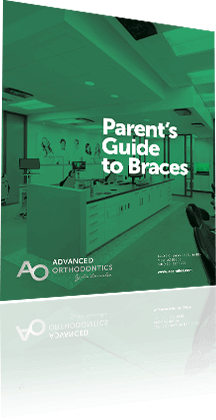Your teeth can sustain damage from different causes, like tooth decay, injuries and wear and tear. The good news is that you don’t have to live with misshapen, unhealthy-looking teeth. You can seek out several treatment and restoration options to restore your beautiful smile, such as dental crowns.
In this blog, we’ll answer essential questions like what is a crown for teeth and why you may need one.
What Is A Crown for Teeth?
Crowns for teeth, or dental crowns, are custom-fitted tooth-shaped caps placed over damaged teeth. They are designed to securely protect cracked or weakened teeth and restore their appearance, giving any patient a permanent and beautiful smile.
Dental crowns are a long-lasting dental restoration solution, usually lasting between five and 15 years. Usually, the lifespan of a crown for teeth ultimately depends on factors such as:
- The amount of wear and tear it’s exposed to
- The patient’s oral hygiene practices
- Mouth-related habits (like grinding or clenching the teeth, biting fingernails or using teeth to open packaging)
Different Types of Dental Crowns
Have you wondered, what is a crown made of? For teeth with specific needs, it helps for you to familiarize yourself with the different types of dental crowns and the materials they’re made from. This can give you an idea of the best choice for your requirements, preferences and budget.
Metal Crowns
Metal crowns are one of the more practical options in this list because they rarely chip or break. In addition, they have superior strength and durability, making them an ideal choice for those who tend to grind or clench their teeth.
The downside is that because they are often made from gold, palladium, nickel and chromium, they can be pretty pricey. On top of that, metal crowns come in a metallic color that can be very conspicuous. However, you can consider getting this type of crown for molars that are out of sight.
Porcelain-Fused-to-Metal Crowns
As the name suggests, this type of dental crown combines metal’s durability with porcelain’s natural look. This means that you can gain the hardwearing properties of metal while having your dental crown’s color match your adjacent teeth.
However, there’s a possibility that the metal under the dental crown’s porcelain cap will create a fine, dark line at the gum line. In addition, the porcelain cap itself may also chip or break off under extreme pressure. Nevertheless, porcelain-fused-to-metal crowns are an excellent fit for front or back teeth, where a durable solution is needed.
All-Resin Crowns
Dental crowns made out of resin are less expensive than most types. However, this also means that they are the least durable option. They wear down quickly and require regular replacement, making them the standard choice for temporary crowns.
All-Porcelain Crowns
All-Porcelain crowns are among the crowd favorites on this list as they can effectively match the look and color of the teeth surrounding them. Aside from this, they’re also perfect for patients with metal allergies and an excellent choice for restoring front teeth.
However, note that dental crowns made out of porcelain are not as durable as metal and porcelain-fused-to-metal crowns. They can wear down the surrounding teeth more than other crowns, so practicing good oral hygiene and mouth-related habits is still key to extending their lifespan.
Stainless Steel Crowns
Crowns made from stainless steel like iron, chromium and nickel are among the oldest types. Because of these materials, these prefabricated crowns are smooth and hardwearing.
While there are newer crown materials available, stainless steel crowns are still relevant today. Dentists and orthodontists commonly use them for young children on baby teeth. This is because the dental crown preserves the baby teeth and comes out in time as they do to make room for the permanent teeth.
Why Would I Need A Dental Crown?
A crown for teeth is helpful in various situations, especially if you need to
- Protect a weak tooth or keep its cracked parts together.
- Restore a severely worn down or damaged tooth.
- Cover and support a tooth with a lot of filling.
- Cover misshapen teeth.
- Cover a dental implant or hold a dental bridge in place.
- Secure a tooth that was recently treated with a root canal.
Steps Involved in Getting a Dental Crown
Generally, you will need to visit your dentist or orthodontist twice to get your dental crown.
On your first visit, they will take a few x-rays to see the roots of the tooth receiving the crown and check for any infections or injuries to its pulp. If decay is present, they may suggest that you get a root canal treatment first.
Otherwise, the tooth to be treated will be reshaped to make room for the dental crown. Afterward, your dentist or orthodontist will make an impression of the tooth using a paste, putty, or a digital scanner. They will then send these impressions to a dental lab to manufacture your dental crown. This often takes around two weeks, so your dentist will put a temporary crown to protect the prepared tooth while you wait.
On your second visit, your dentist removes the temporary crown and checks that the permanent one fits just right. If there are no problems, they will cement the dental crown in place.
Expert Dental Treatment Solutions At Advanced Orthodontics
What is a crown for teeth? Why would I need a dental crown? These are some of the many questions our patients ask us and we’re always ready to provide expert answers. Now that you know more about dental crowns, the next step is to consult knowledgeable orthodontists who will be glad to discuss your treatment options with you.
At Advanced Orthodontics, we’re all about helping patients like you achieve beautiful, healthy smiles through our dental restoration solutions. On top of this, we offer flexible payment options you can maximize to meet your dental needs without breaking the bank. If you want to know more about our treatment options, payment schemes, and unique treatment experience, don’t hesitate to contact us at (480) 357-4900 for a complimentary consultation.







